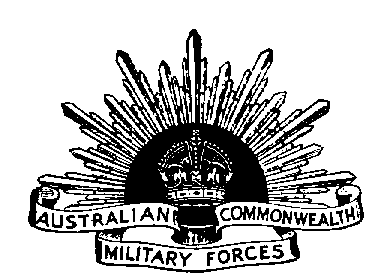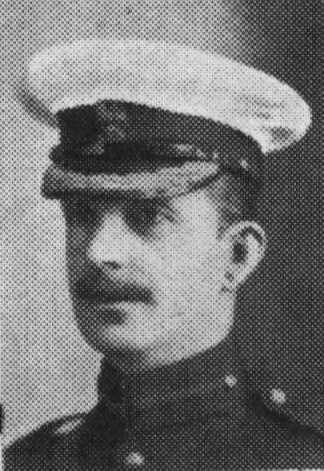


Duncan John Glasfurd was born in Matheran, India on 23 November 1873, the second son of Major General Charles Lamont Robertson Glasfurd of the Bombay Staff Corps. (Duncan's brother Alexander later became a colonel in the Indian Army.) He was educated in Edinburgh, Scotland and at the Royal Military College, Sandhurst.
Glasfurd was commissioned as a lieutenant in the 2nd Battalion, Argyll and Sutherland Highlanders in October 1893 and served as adjutant of the 1st Battalion, Argyll and Sutherland Highlanders in South Africa. Promoted to captain in January 1900, he saw action in the Orange Free State; Paardeberg, where he was wounded; the Transvaal and the Orange River Colony where he was seriously wounded in October 1900.
From April to November 1901, Glasfurd participated in operations against the Mad Mullah in Somalia. He moved on to India but returned to participate in further operations against the Mad Mullah in 1903-04, in which he commanded the 4th Somali Camel Corps. For his services in Somalia, Glasfurd was mentioned in dispatches.
After another spell in India, Glasfurd returned to Scotland in June 1908, where he became staff captain for coast defences, Scottish Command. Later than year he was selected to attend the staff college at Camberley, England. Graduating in 1909, he rejoined his regiment in Malta in May 1910. In November, he was appointed brigade major of the Lothian Infantry Brigade.
On 24 June 1912, Glasfurd was seconded to the Australian Army as Director of Military Training, with the rank of captain. He was responsible for the program of compulsory training of cadets. Glasfurd was enthusiastic about the task, but dissatisfied with the quality of training being carried out by some of the area officers, whom he regarded as unsuitable for this particular work. He was also concerned about the volume of clerical work that the area officers were burdened with. On 20 September 1913, Glasfurd was promoted to major in the British and Australian Armies.
When war broke out, Glasfurd immediately requested permission to rejoin his regiment. Permission was not forthcoming; Major General W. T. Bridges needed a staff college graduate for his 1st Division Headquarters and Glasfurd was chosen. He was appointed to the AIF on 15 August 1915 as General Staff Officer (2nd Grade) (GSO2) with the rank of major. As such he was particularly responsible for training, and the training of the 1st Division at Mena Camp in Egypt was supervised by Glasfurd.
Glasfurd landed at Anzac at 5:35 am on 25 April 1915. He climbed Ari Burnu straight to Colonel E. G. Sinclair-MacLagan's headquarters, where he was informed that the 2nd Brigade, instead of coming in on the left, would, owing to the 3rd Brigade having landed too far north, be diverted towards Lone Pine on the right. He returned to the beach where he found the senior officer ashore of that brigade, Lieutenant Colonel H. E. Elliott. In the original plan, Glasfurd was supposed to meet the 2nd Brigade and guide it ashore. In actuality, Glasfurd had come ashore a few minutes later than Elliott and the rest of the brigade was not yet ashore. Glasfurd decided to form up units in Shrapnel Gully as they arrived, and started with Elliott's battalion, which he directed to Lone Pine.
Glasfurd did not always get along with his superior, Lieutenant Colonel C. B. B. White, who gathered all the staff functions to himself, leaving Glasfurd with little to do. When the latter became sick, Glasfurd took over as GSO1 of the 1st Division. White did not return, instead becoming Brigadier General General Staff (BGGS) of ANZAC, and so on 1 October 1915, the appointment became permanent and Glasfurd was promoted to lieutenant colonel. During the evacuation of Anzac, Glasfurd represented the 1st Division on the Rear Party staff of A. H. Russell, which controlled operations at Anzac until Russell handed over to Colonel J. Paton. For his services at Anzac, Glasfurd was mentioned in dispatches and made a brevet lieutenant colonel in the British Army in January 1916.
On 1 March 1916, Glasfurd was appointed commander of the newly formed 12th Infantry Brigade, with the rank of colonel and temporary brigadier general. His first test was a route march across the Sinai Desert. By the the simple expedient of resting his men from 8:50 am to 3:25 pm he managed to avoid the hottest hours of the day and still make good time. Although many men fell out, the brigade reached its bivouac in good order. The brigade ahead, under Brigadier General G. G. H. Irving was less fortunate and Irving was relieved of his command.
The 12th Brigade moved to France in June 1916 and on 4 July entered the line in the "nursery" sector near Armentieres, where Glasfurd was slightly wounded on 7 July. In August 1916, the brigade was committed to action on the Somme sector, in the fighting on the Pozieres Heghts and Mouquet Farm. On 12 November 1916, the brigade was sent into the line again at Flers. While inspecting the line into which his brigade was about to move, Glasfurd was wounded by a German shell in "Cheese Road". After an agonising ten hour stretcher journey in which relays of gallant stretcher bearers laboured strenuously to carry him through the mud from the front line to the advanced dressing station, Glasfurd died that night at the British 38th Casualty Clearing Station. He was buried in the Heilly Court Cemetery at Mericourt-l'Abbe, France. For his services on the Western Front, he was twice mentioned in dispatches.
The official historian, Captain C. E. W. Bean, describe Glasfurd as "an able officer with a profound knowledge of his profession, capable of brain, slow of thought but sound of judgement and possessed of the hard pluck of most Scottish folk" and stated that he was "one of the bravest and most conscientious officers upon the staff". For his headstone, his family chose the epitaph "A brave man and a gallant soldier".
Sources: Australian Dictionary of Biography, 1899-1939, Vol 7, pp. 20-21; Bean, C. E. W., The Official History of Australia in the War of 1914-1918. Volume I: The Story of Anzac pp. 76, 362-364, 486; Volume III: The AIF In France 1916, p. 955
Page created by Ross
Mallett
ross@metva.com.au
Last update 16 September 2001